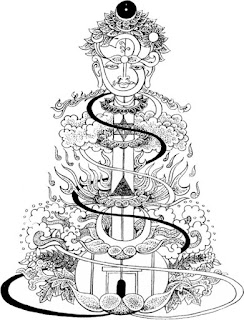Ten axioms of Vaishnavism

These ten truths seek to answer questions like;
What is the source of knowledge of the absolute?
Who is the supreme truth?
What are his attributes?
What is true happiness?
Who are we?
Where do we come from?
What is our highest potential?
What is our relationship with the supreme truth?
What is the means of attaining vision of that supreme truth?
and what is the highest goal of life?
The standard for acquiring knowledge of the absolute truth in vedic/agamic culture is to refer to the "Sastras" or sacred texts which are called "apauruseya". The spiritual tradition of India holds that their scriptures are not made up by men but are revealed to them by higher beings either in trance or in actual contact with these beings. Generally, it is Lord Shiva who is considered the source of sastra, and in pancharatric tradition it is said that in a single instant all sastras manifest from the heart of Sankarshana.
The sages thus have declared Sastra to be the primary source of knowledge in regards to the absolute truth, with direct perception and logic coming in close but acknowledged as being incomplete and subject to individual ability.
Thus, when all of the sastras are examined, we find that there are three descriptions of the absolute truth according to the different tastes or experiences of it.
The first is the all pervasive Brahman, this is the absolute oneness that many of the yogis of modern times have spoken about, its primary flavor is peace, and it is perceived as a non-differentiated, all pervasive, and conscious light.
 The second is the localised super soul called Paramatma, who resides in our hearts as the conscience or inner guide. He has been described according to the image of Narayana standing on the Hrtpadma, the spiritual heart.
The second is the localised super soul called Paramatma, who resides in our hearts as the conscience or inner guide. He has been described according to the image of Narayana standing on the Hrtpadma, the spiritual heart.
The last is considered to be the fullest expression of the absolute truth, replete with the full manifestation of opulence, energy, and mellow. This aspect is called Bhagavan. Bhagavana is the personal manifestation of the absolute, capable of self expression, relationships, and love. Bhagavana is said to have unlimited manifest forms, but the orginal form, according to the Bhagavata purana, is Sri Krsna.
Sri Krsna is depicted as associating with an unlimited number of consorts, these consorts represent his unique and infinite energies or Shakti. The experience that arises out of the union of Bhagavana and his shaktis, is called Rasa, that Rasa is considered the highest happiness imaginable.
The sastra declare that the individual is a spark or part of Paramatma, called Jiva. The relationship between Jiva and Paramatma is that of inconceivable, non-conceptual, qualitative non-difference and quantitative difference. Thus the soul, is a part of the absolute truth in quality, but since individual souls are many and paramatma is one, they are quantitatively different in nature.
 |
| Add caption |
The soul by nature engages in service. We engage in constant service to our bodies, families, countries etc but because that service is misplaced unto that which is disconnected from the soul, it is the cause of our illusion.
Only when the souls service nature is directed towards Bhagavana, will he find true freedom and bliss. This form of service, which is directed at Bhagavana is called Bhakti.
The result of adopting the method of Bhakti results in the attainment of Prema mahabhava(A transcendental state of absolute absorption in the love between Bhagavana and his energy)
Only when the souls service nature is directed towards Bhagavana, will he find true freedom and bliss. This form of service, which is directed at Bhagavana is called Bhakti.
The result of adopting the method of Bhakti results in the attainment of Prema mahabhava(A transcendental state of absolute absorption in the love between Bhagavana and his energy)
The main practice is to recite the names of Bhagavana with a sense of humility and tolerance, either in meditation like the sufi zikr, or in kirtana with music and dancing(my favourite) the result of such practice over time is a genuine introduction to ones actual spiritual nature, and a steady experience of the true nature of love.
I understand these various aspects as described above to be aspects or levels of being, inseparable from myself and others.
Thus bhakti is not about serving an overlord, but serving ones very core.
I hope this sheds a small lamp on the philosophical structure of my particular tradition and spiritual lineage.
Like, share, and comment down below
#jainitai



Comments
Post a Comment